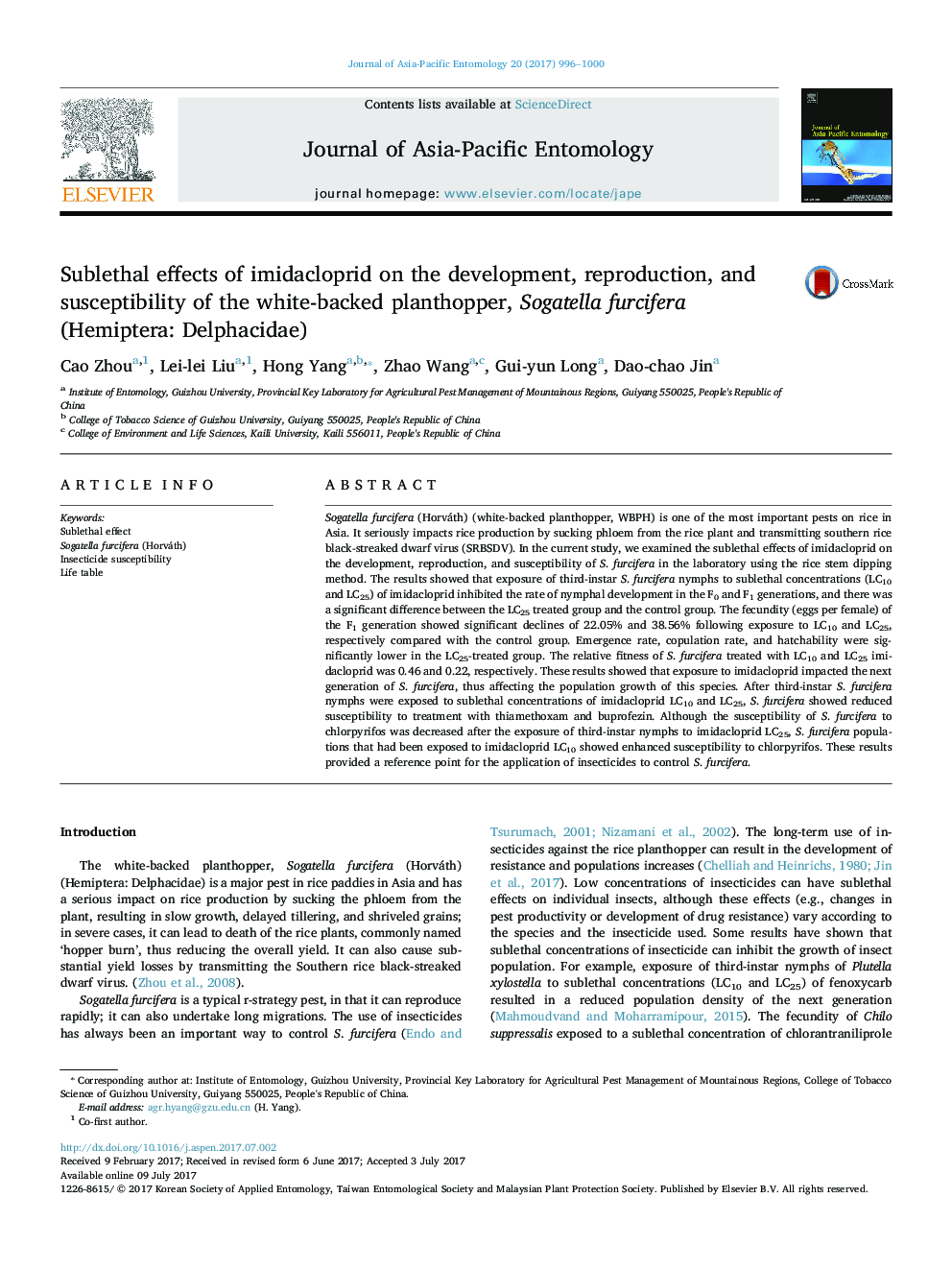| کد مقاله | کد نشریه | سال انتشار | مقاله انگلیسی | نسخه تمام متن |
|---|---|---|---|---|
| 5763534 | 1412973 | 2017 | 5 صفحه PDF | دانلود رایگان |

- Imidacloprid LC10 and LC25 both inhibited the development rate of Sogatella furcifera in the F0 and F1 generations.
- The fecundity of the F1 generation showed significant declines following exposure to imidacloprid LC10 and LC25.
- Imidacloprid stress can reduce the susceptibility of S. furcifera to thiamethoxam and buprofezin treatments.
Sogatella furcifera (Horváth) (white-backed planthopper, WBPH) is one of the most important pests on rice in Asia. It seriously impacts rice production by sucking phloem from the rice plant and transmitting southern rice black-streaked dwarf virus (SRBSDV). In the current study, we examined the sublethal effects of imidacloprid on the development, reproduction, and susceptibility of S. furcifera in the laboratory using the rice stem dipping method. The results showed that exposure of third-instar S. furcifera nymphs to sublethal concentrations (LC10 and LC25) of imidacloprid inhibited the rate of nymphal development in the F0 and F1 generations, and there was a significant difference between the LC25 treated group and the control group. The fecundity (eggs per female) of the F1 generation showed significant declines of 22.05% and 38.56% following exposure to LC10 and LC25, respectively compared with the control group. Emergence rate, copulation rate, and hatchability were significantly lower in the LC25-treated group. The relative fitness of S. furcifera treated with LC10 and LC25 imidacloprid was 0.46 and 0.22, respectively. These results showed that exposure to imidacloprid impacted the next generation of S. furcifera, thus affecting the population growth of this species. After third-instar S. furcifera nymphs were exposed to sublethal concentrations of imidacloprid LC10 and LC25, S. furcifera showed reduced susceptibility to treatment with thiamethoxam and buprofezin. Although the susceptibility of S. furcifera to chlorpyrifos was decreased after the exposure of third-instar nymphs to imidacloprid LC25, S. furcifera populations that had been exposed to imidacloprid LC10 showed enhanced susceptibility to chlorpyrifos. These results provided a reference point for the application of insecticides to control S. furcifera.
159
Journal: Journal of Asia-Pacific Entomology - Volume 20, Issue 3, September 2017, Pages 996-1000